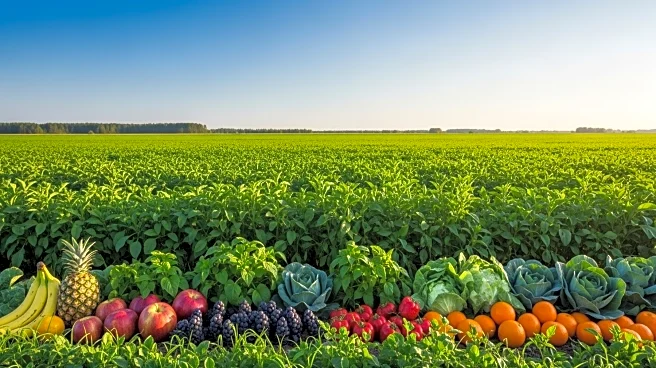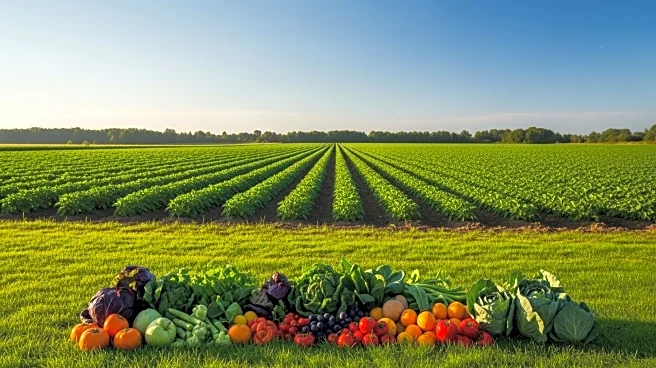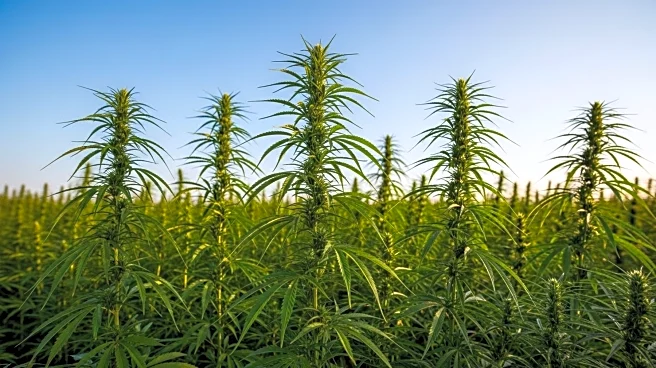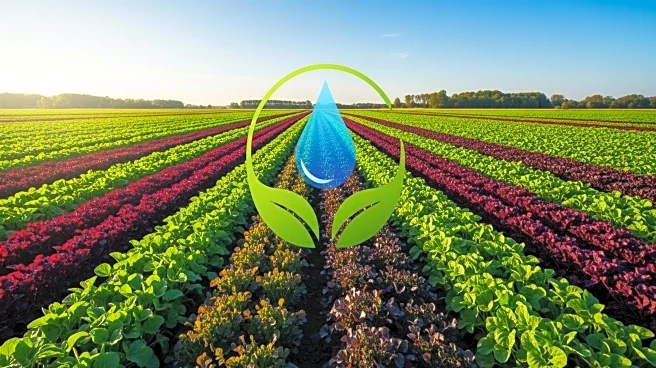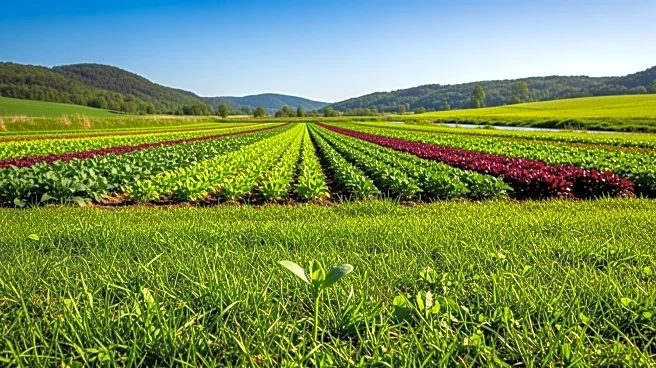What's Happening?
The global regenerative agriculture market is projected to grow significantly, reaching $30.30 billion by 2032 from $11.98 billion in 2025. This growth is driven by increasing awareness of the need to restore soil health, conserve biodiversity, and create resilient food systems. Government policies, financial incentives, and rising consumer demand for organic food are supporting this expansion. The U.S. Department of Agriculture's investment in sustainable agriculture research and carbon credit schemes are encouraging farmers to adopt regenerative practices. Technological innovations, such as AI-based analytics and remote sensors, are enhancing resource management and carbon sequestration.
Why It's Important?
The growth of the regenerative agriculture market reflects a shift towards sustainable farming practices that balance economic benefits with environmental responsibility. Regenerative agriculture offers solutions to improve soil fertility, reduce chemical dependency, and enhance crop resilience, addressing key challenges in the agricultural sector. The market expansion presents opportunities for farmers to access new revenue streams through carbon credits and meet consumer demand for sustainably produced food. As the industry evolves, stakeholders must navigate complex challenges to promote genuine sustainability and prevent misleading claims.
What's Next?
The regenerative agriculture market is expected to continue its growth trajectory, driven by ongoing research and development efforts. Innovations in biofertilizers, biopesticides, and microbial solutions will support the adoption of regenerative methods. As more studies validate the benefits of regenerative agriculture, investors and governments may increase funding, opening further opportunities for market expansion. The focus on agroforestry and livestock integration highlights the potential for diverse and sustainable farming systems. Regional markets, particularly in North America, are poised for significant growth, supported by strong policy frameworks and consumer preferences.
Beyond the Headlines
The rise of regenerative agriculture reflects broader ethical and cultural shifts in the food industry. The movement towards sustainable farming practices highlights the importance of balancing economic benefits with environmental responsibility. The lack of a clear definition raises questions about the role of certifications in consumer education and market dynamics. As the industry evolves, stakeholders must navigate complex challenges to promote genuine sustainability and prevent misleading claims. The discussion also underscores the need for collaboration and innovation to address food security and environmental challenges.

